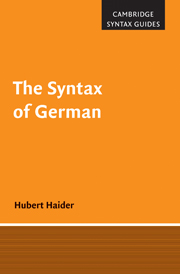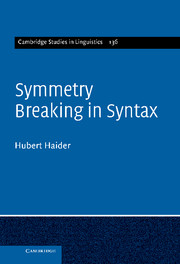The Syntax of German
What do you know, if you know that a language has 'Object Verb' structure rather than 'Verb Object'? Answering this question and many others, this book provides an essential guide to the syntactic structure of German. It examines the systematic differences between German and English, which follow from this basic difference in sentence structure, and presents the main results of syntactic research on German. Topics covered include the strict word order in VO vs word order variation in OV, verb clustering, clause union effects, obligatory functional subject position, and subject-object asymmetries for extractions. Through this, a cross-model and cross-linguistic comparison evolves, highlighting the immediate implications for non-Germanic OV languages, and creating a detailed and comprehensive description of the syntactic differences that immediately follow from an OV type in contrast with a VO type like English. It will be of interest to all those interested in syntax and Germanic languages.
- Provides a more in-depth look at German syntax than other literature in the field
- Considers the full impact of object-verb sentence construction, extending this to implications for other European languages
- Offers a direct comparison with the verb-object structure of English, allowing the reader to contrast this particular sentence structure
Product details
January 2010Hardback
9780521865258
386 pages
234 × 156 × 22 mm
0.74kg
Available
Table of Contents
- Foreword
- Abbreviations
- List of tables and figures
- 1. A comparative survey: German – V2 and partially 'OV'
- 2. The functional architecture of a German clause – facts and controversies
- 3. Targeting the clause initial position - German wh-constructions
- 4. Targeting left: clause internal word order and word order variation
- 5. Targeting the right edge – extraposition
- 6. Case: a nominative-accusative language with a four way case paradigm
- 7. Non-finite verbs and their constructions
- References.







